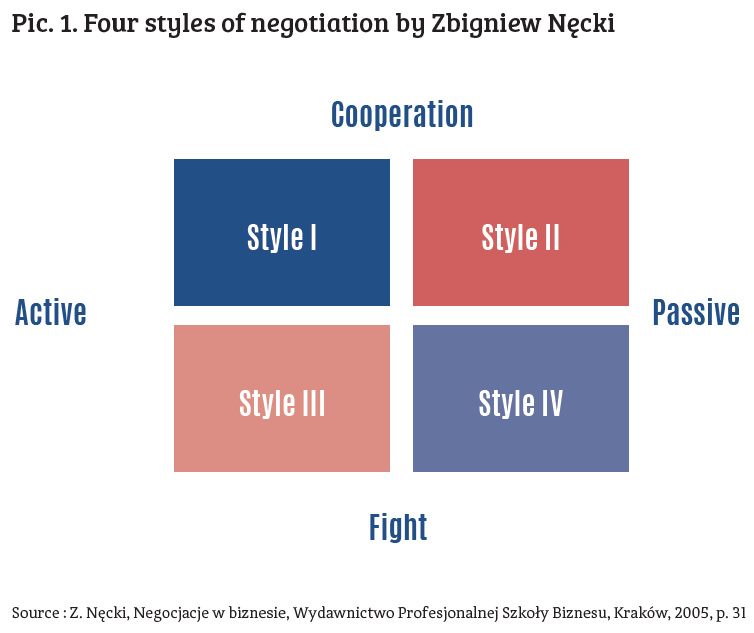Negotiations in practice: Analysis of negotiating positions
Negotiations, understood as a communication process aimed at getting an agreement, are an essential tool in the work of a sales person. Without having some degree of negotiation skills, no seller should even dream of being successful. And although, in practice, the success of a transaction is often determined by just one factor, such as price, it is worth knowing how to prepare for negotiation, how to recognise negotiating positions and how to use this knowledge in the whole sales process.
Dostępny jest przetłumaczony materiał kliknij tutaj, aby przejść do materiału.

Before negotiating, it is necessary to determine the negotiating position - yours and your customer’s by answering a few basic questions:
- What is the subject of the negotiations? Most often, there are several issues: product, price, delivery terms, payment terms, etc - you need to precisely determine the weight of each of them and negotiation options.
- What is BATNA (Best Alternative to a Negotiated Agreement)? It will protect you from consenting to unfavourable solutions or accepting solutions beneficial only to the client. The more attractive BATNA is, the better the negotiating position.
- What is the rational offer, the one which negotiations are led by?
- What is the worst possible outcome of the negotiations, below which an agreement is not possible?
- What is the “dream offer” - a starting point for negotiations? It is important to know the industry, competition, and to have an initial recognition of the contractor’s needs. The dream offer mustn’t scare the customer, it cannot be inadequate to market conditions, as then the negotiations will not take place at all. Here, the seller’s experience will be the most important factor.
Defining the client’s negotiating position before the first meeting is very difficult, sometimes impossible. However, it is worth using the available sources, acquiring knowledge about what the contractor is dealing with, and what their expectations may be. All information that can be obtained from the market is also important.
Negotiation styles
When the meeting comes, the negotiators - sitting opposite each other - represent a specific style of negotiation. Recognising the client’s style is one of the factors that makes it possible to close the deal with them successfully and helps in determining the negotiating position.
Zbigniew Nęcki distinguished four styles of negotiation1:
- Style I - active-cooperative - characterised by scrupulous detail analysis, resistance to emotional arguments,
- Style II - passive-cooperative - relies on the conventional way of dealing, in reference to universal values, the attitude of cooperation and agreement,
- Style III - active-fighting - very active, taking over the initiative, emotionality and spontaneity, imposing one’s opinion,
- Style IV - passive-fighting - associated with the ability to maintain good interpersonal relationships, openness, dexterity, diplomacy, reluctance to take the initiative.
Practice shows a slightly different classification:
- Hard style - competitive and one-sided victory oriented. The negotiator representing this style often enforces compromise, is not interested in achieving benefits by a customer whom he treats as an opponent. It is often used in one-off negotiations and is unhelpful in building long-term relationships.
- Soft style - willing to make compromises, even at one’s own expense. The negotiator adapts to the partner, often to avoid conflict. Commonly, it also ends negotiations with a sense of being used and dissatisfaction with the solution obtained.
- Cooperation orientated style - here negotiators are equal, their negotiations are focused on achieving the goals of both parties. Decisions are made jointly, on the basis of rational premises. This style is the most rewarding in building long-term relationships, and that’s what it’s about in sales.
Wykorzystałeś swój limit bezpłatnych treści
Pozostałe 65% artykułu dostępne jest dla zalogowanych użytkowników portalu. Zaloguj się, wybierz plan abonamentowy albo kup dostęp do artykułu/dokumentu.







 Zaloguj się
Zaloguj się








